The Great Fire of London was a monumental event in London’s history. The blaze in 1666 destroyed thousands of homes and left St Paul’s Cathedral a smouldering ruin. Rebuilding the city gave rise to some of the best-known architecture to be seen in London today. Its importance means the Great Fire of London is a topic studied in many UK schools, particularly in year 2 (KS1).
After questions from my daughter, querying: ‘where is the great fire of London’ and ‘can you visit the great fire of London?’, we decided to retrace its pathway. We took a family trip to London to see the Great Fire of London locations on a self-guided walk. Read on for details of our Great Fire of London free family walking tour, information about the Great fire with facts for kids and climbing Monument with children.
Where did the Fire of London begin?
The Great Fire of London started in at a bakery in Pudding Lane, an unassuming street in the heart of the City of London. The King’s baker, Thomas Farrier, lived and worked at the Pudding Lane bakery.
To get to Pudding Lane, go to Monument station on the circle and district lines.
It’s unclear exactly how the fire started. Farrier denied leaving this fire alight before going to bed. The blaze spread quickly amongst the 17th-century flammable timber housing and straw roofs. Recovering from a long drought, the houses caught fire quickly and were packed together so tightly the flames easily jumped from street to street fanned by a strong east wind.
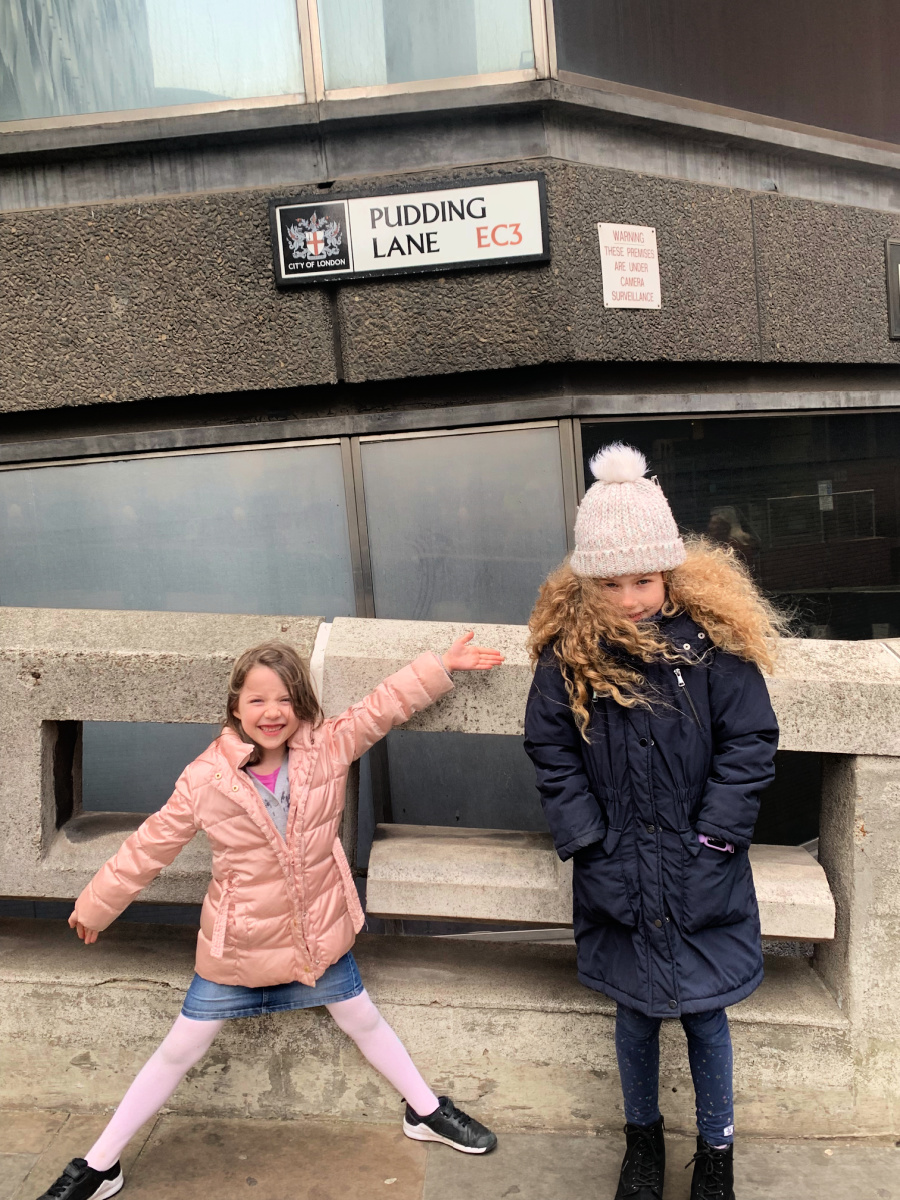
How long did the Fire of London last?
The Great Fire of London lasted for four days from 2 – 5 September in 1666, destroying 13,000 houses, 87 churches and leaving almost 100,000 people homeless. It caused significant damage to St Paul’s Cathedral which would later be rebuilt by Sir Christopher Wren.
After a couple of minutes wondering where Farrier’s infamous shop stood, we spotted a plaque on the side of a building marking where the bakery resided.
One of my daughter’s top facts about the Fire of London which she quizzed us on was: ‘How many people died in the fire of London’? Officially, only six perished. Of course, this has since been called into question. Due to the severity and heat of the fire, it is likely many remains where not discovered and those from poorer backgrounds were not counted.
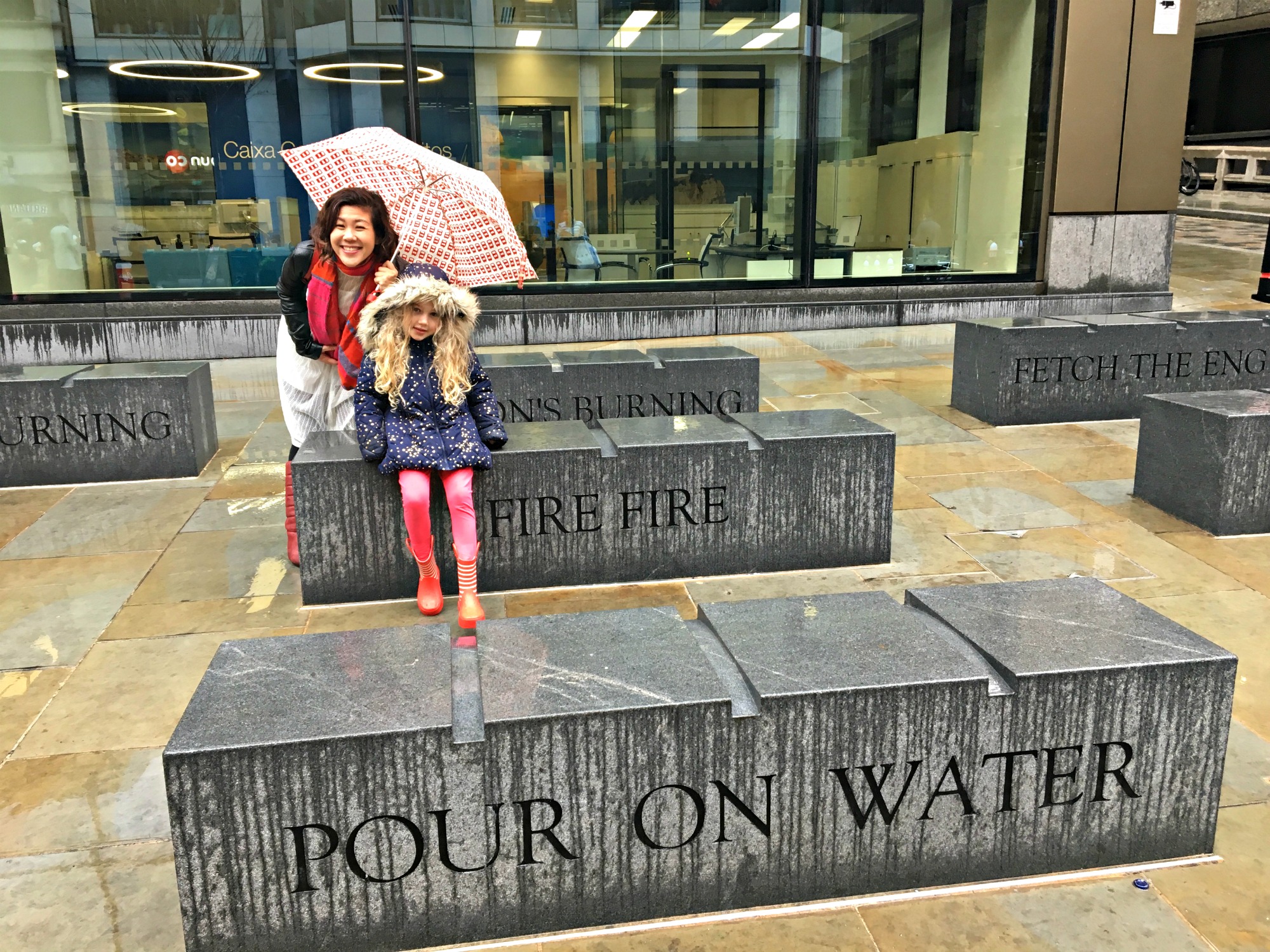
Fire, Fire sculpture at Monument
Across the narrow road from Pudding Lane are some concrete blocks with the words from the famous nursery rhyme, London’s Burning.
“London’s Burning, London’s Burning,
Fetch the engines, fetch the engines,
Fire, fire, fire, fire,
Pour on water, pour on water.”
As well as bringing back childhood memories of the rhyme (usually sung in a round), it also serves as a good place for photos and somewhere to rest your legs, especially if you’ve just climbed up Monument!
Monument to the Great Fire of London
You can’t miss Monument, the soaring structure designed by Sir Christopher Wren and Dr Robert Hooke. A memorial to the Great Fire of London, it stands next to Monument tube station. At 202 feet high, it marks the distance away from the scene of the fire in Pudding Lane (202 ft away).
Built between 1671 and 1677, Monument is the tallest isolated stone column in the world. It was closed for two years between 2007-2009 for cleaning and repair work. This included re-gilding its urn at the top. Even on a dull, cloudy day, the gold glistened against the grey buildings.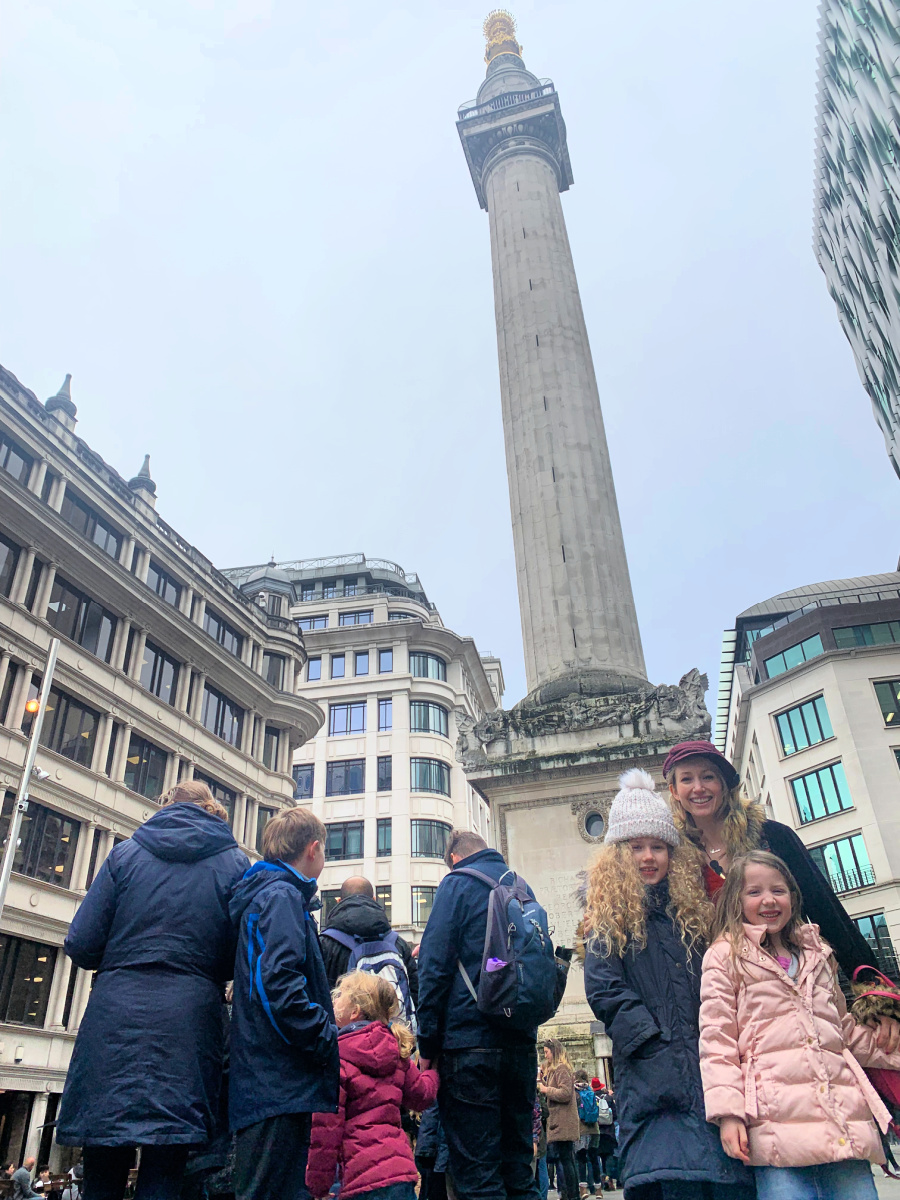
The column has 311 steps to the top. There was no question, we had to climb! Going during the half term holiday, it was busier than normal mid week but they limit numbers inside to 33 people at a time.
Climbing Monument to Great Fire of London
The staircase inside Monument is narrow in places and you have to make way for visitors coming down but my six year old raced on ahead and barely broke a sweat – or complained. Soon we had climbed to the top of London’s Monument.
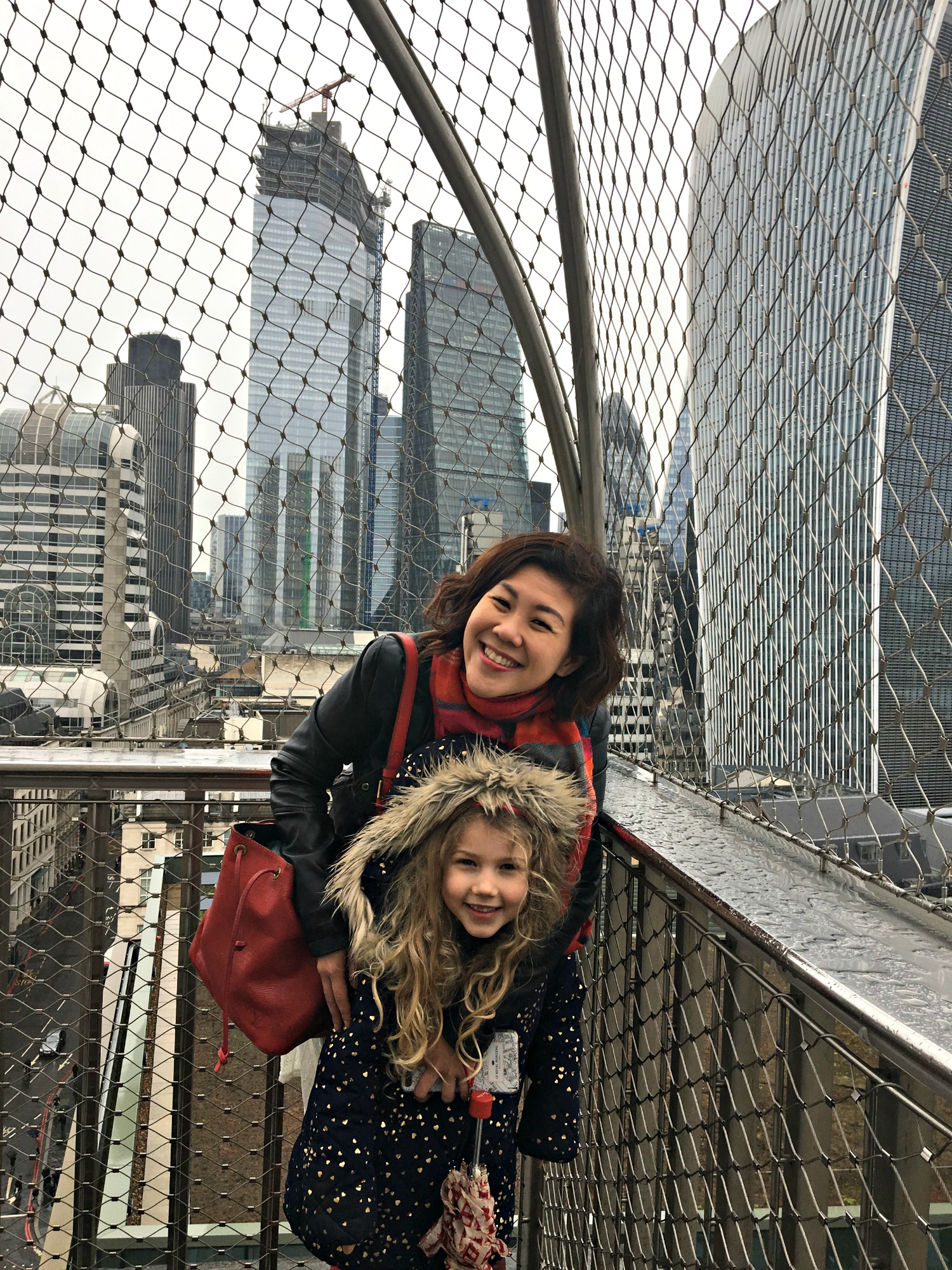
You are treated to 360 degree views of London from the top of Monument. Even in the cloud and rain, London is a wonder to behold. You can see all the landmarks of London including modern buildings including The Shard and Gherkin.
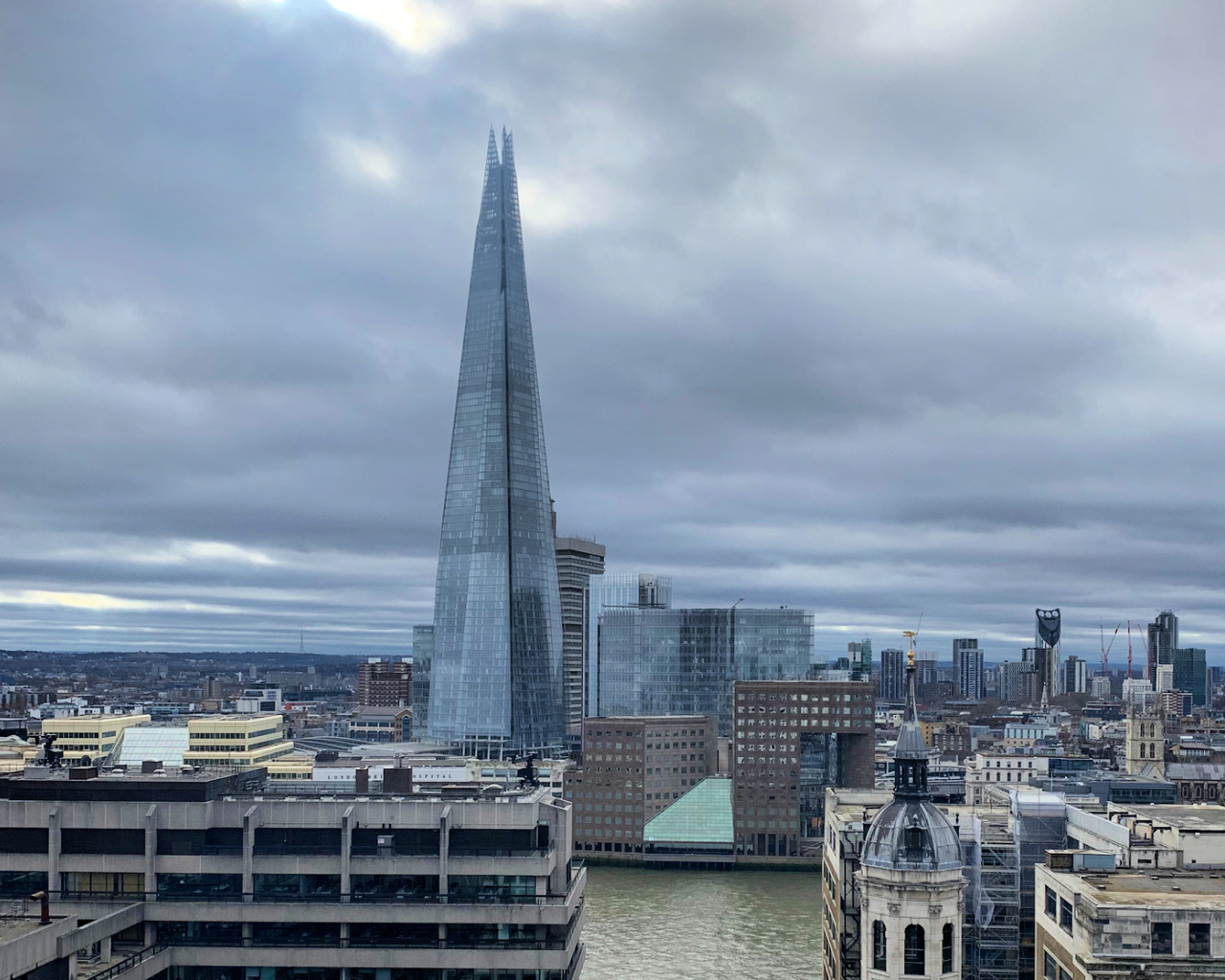
Looking south-east, you can see the Thames and Tower Bridge. Monument is a top place for London views, if you are prepared to climb up the steps.
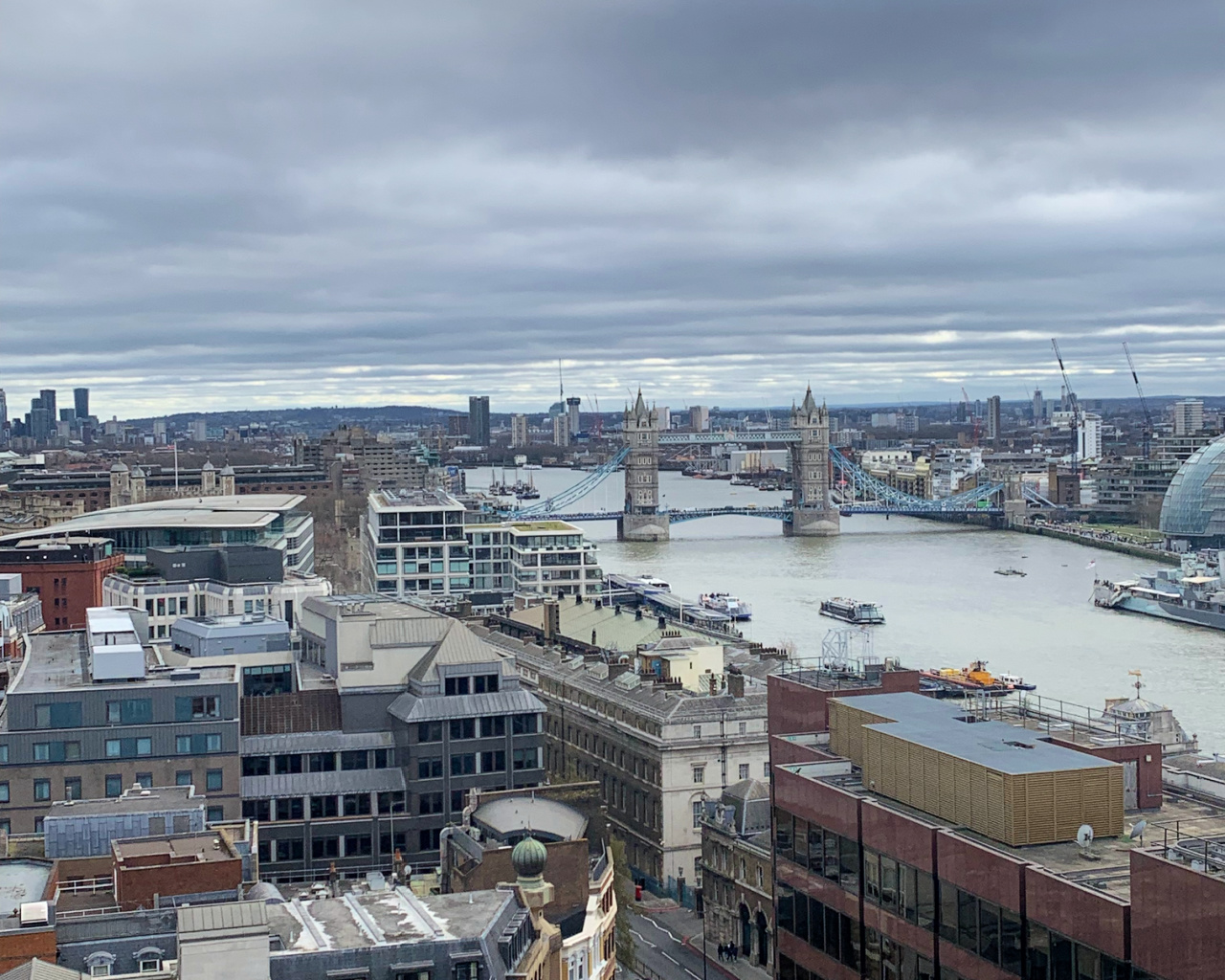
St Paul’s Cathedral is visible at the top of The Monument. Rebuilt after the fire, the Sir Christopher Wren design is one of the most famous buildings in London. Glimpsing it standing so far away from Monument and the scene of fire, it put the Great Fire of London into perspective for my daughter. The fire continued much further but didn’t make it across the Thames to London’s South Bank.
To climb Monument, it costs £4.50 for adults and £2.30 for children. I was glad we weren’t with younger children. Carrying a toddler while climbing Monument’s 311 stairs would have been challenging. When you have descended, you are rewarded for your efforts with a certificate!
What else can you see on Monument?
If climbing up sounds like too much hard work or you have younger children, check out the bas relief at the bottom of Monument which shows the destruction of the city. It features Charles II and his brother James (later King James).
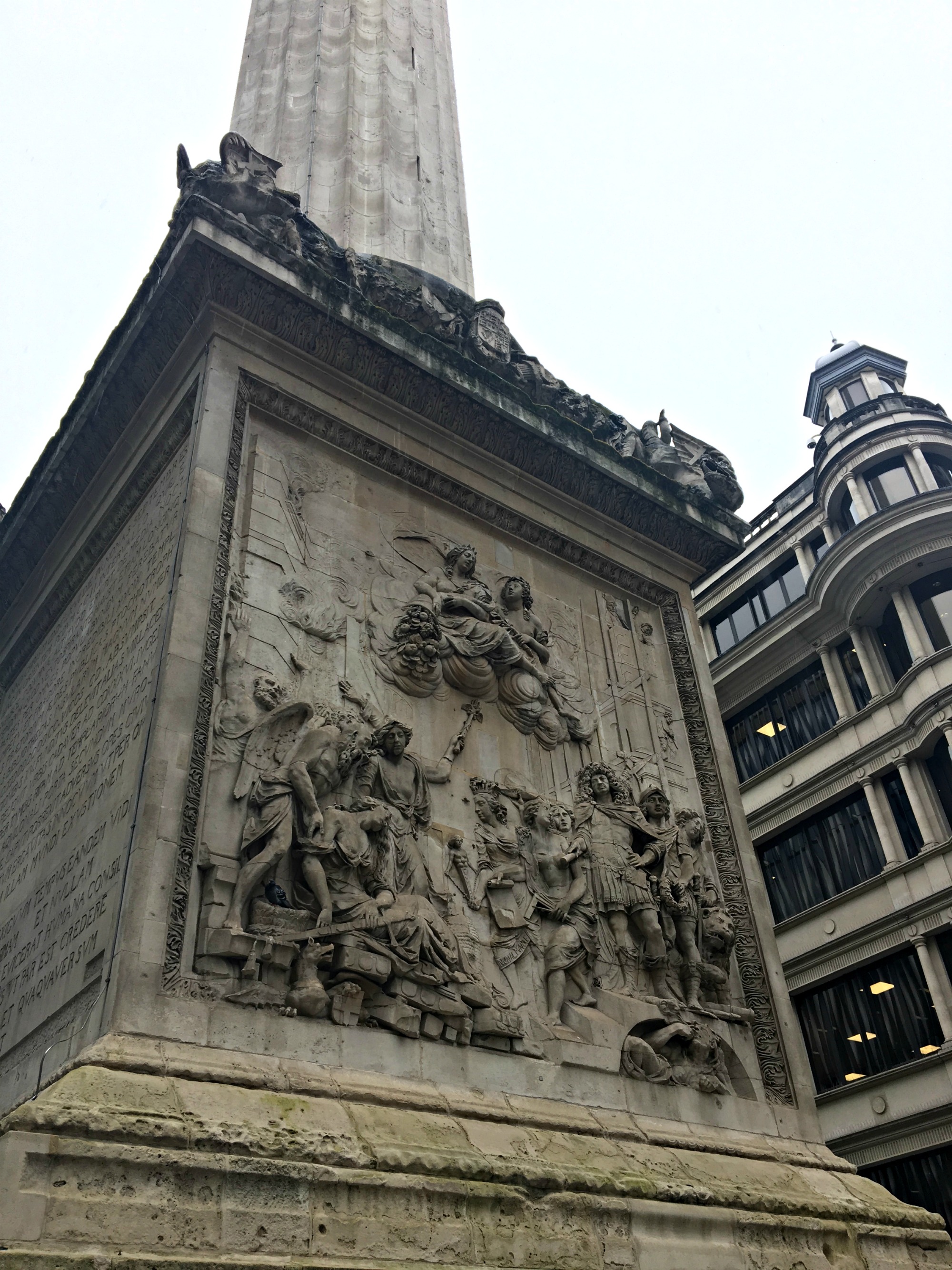
On the other sides are inscriptions in Latin describing the actions taken by King Charles II who came out onto the street with a bucket to help. It also details how it started and stopped and the damage caused. Words which wrongly blamed Catholics for the fire were chiselled out in 1830.
Once finished, it might be time to grab a drink or some food. There are plenty of place nearby to visit. We went to somewhere close to Leadenhall Market.
To get to Leadenhall Market, head up Pudding Lane turn right then go up Philpot Lane. Keep going north onto Lime Street then go left onto Leadenhall Market.
Leadenhall Market
One of the oldest markets in London this iconic space is now best known for its Harry Potter fame. Leadenhall Market made up Diagon Ally in Harry Potter and the Philosopher’s Stone and is where Harry and Hagrid enter the Leaky Cauldron pub. If you have Harry Potter fans with you then this is a must-see place to include on your Great Fire of London tour.
In terms of the Great Fire, the blaze didn’t go any further North East than Leadenhall Market. Part of the market was destroyed but its stone structure saved other areas.
If you would like a further detail about Leadenhall market and the history of the City of London, you could book a guided tour and if you are Harry Potter fans, discover more Harry Potter London locations in a guided walking tour.
Guildhall
On the third day of the fire, flames reached Guildhall, home of the City of the London Corporation. Completed in 1430, as it was made of stone, the fire did not destroy it. Guildhall is one of the few medieval buildings in the City to survive following the fire.
An incredible building, Guildhall is worth going to see and if there are no events on, venture inside to view its stunning Great Hall and art gallery which has paintings of the Great Fire. Admission is free.
Find your way to Threadneedle Street, past bank station and onto Poultry then down King Street. Guildhall is on Gresham Street.
St Paul’s Cathedral
To get to St Paul’s Cathedral, make your way back onto Cheapside, passing St Mary-le-Bow on the way, one of many churches rebuild by Sir Christopher Wren following the fire. It’s famous due to its bells. If you are born within earshot you are said to be a Cockney.
From there, you can’t miss seeing the iconic dome of St Paul’s Cathedral. Continue along Cheapside then head through the churchyard to the entrance. If you are hungry, there are plenty of eateries on Cheapside and in the shopping centre, One New Change, to stop and refuel.
Visiting St Paul’s Cathedral
To enter St Paul’s when there isn’t a service on, you have to buy a ticket, which lasts for a year. I had one from when I visited previously to climb to the top of St Paul’s Cathedral.
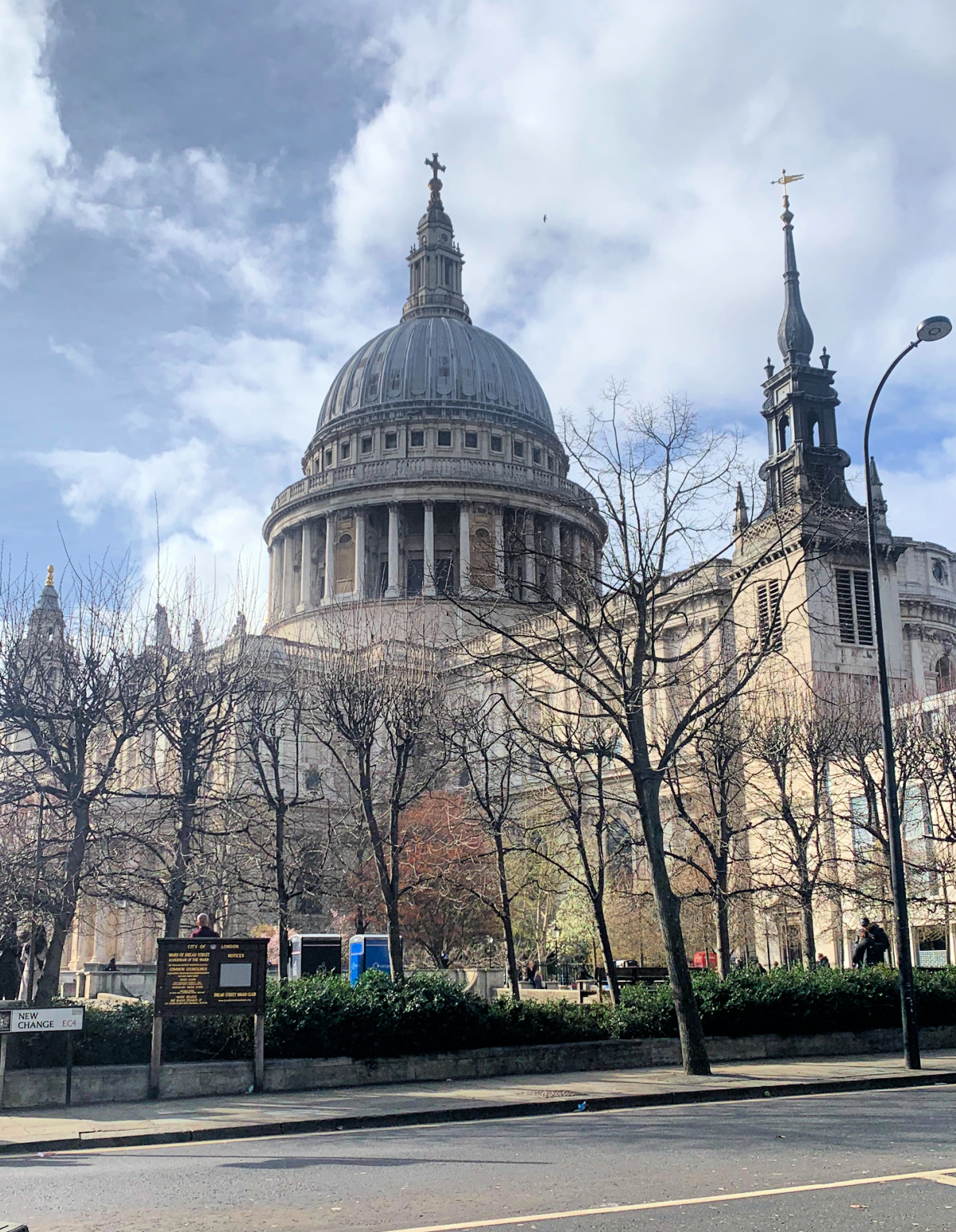 It’s worth going inside and having a look at this magnificent building. In the cathedral’s crypt, there is a display about the history of St Paul’s and the impact of the fire and its reconstruction. We had a look at the old paintings of the fire and learnt some additional facts about the Fire of London.
It’s worth going inside and having a look at this magnificent building. In the cathedral’s crypt, there is a display about the history of St Paul’s and the impact of the fire and its reconstruction. We had a look at the old paintings of the fire and learnt some additional facts about the Fire of London.
Plans were already underway before the fire to restore and rebuild St Paul’s with Sir Christopher Wren at the helm. The scaffolding in place when the fire broke out helped spread the flames and two days after the fire started, the blaze engulfed the Medieval cathedral.
Many had sought refuge in St Paul’s with one person perishing inside. The Cathedral’s wooden roof, scaffolding and huge library containing thousands of books in the crypt meant the building was destroyed, burning for a week.
To visit St Paul’s Cathedral, it’s £23 for a ticket on the door which lasts for a year (it’s £20.50 online). Under 5s go free. It’s £10 (£9) for children aged 6-17. Family tickets are also available.
The River Thames
If you still have energy, head to the River Thames. Go down Godliman Street, turn left then right and you’ll see the Millennium Bridge. In 1666, the only bridge across the River Thames was London Bridge. It was packed with houses at the time so wasn’t a good escape route from the fire. When the fire broke out, it was chaotic along the river with warehouses burning and merchants throwing their goods into the river. Fortunately, the river managed to halt the fire and the Great Fire of London did not spread to the South Bank.
The Great Fire of London Facts and Legacy
The Great Fire of London helped to alter the skyline of London and bring change to the city. Home insurance was created and buildings had to be faced in brick following the fire. There were also tighter building controls and houses were no longer built so close together.
It wasn’t until 1865 that the London fire brigade was established but with the invention of home insurance, companies set up their own fire brigades.
Many were left homeless after the fire, sleeping in tents in fields around the city. Disease spread and due to a cold winter many died. But the fire did help obliterate the Black Death by killing rats carrying the deadly disease.
It’s hard to imagine London without the iconic dome of Sir Christopher Wren’s St Paul’s Cathedral. As the king’s surveyor, Wren helped to design 52 churches in the City of London as well as Monument.
KS1 Great Fire of London
Our Great Fire of London walk ended at St Paul’s Cathedral and we hopped on the tube home. If you have a child in KS1 who is learning about the fire, you will no doubt have helped create a 17th-century house made of cardboard. Designed to be burnt (to illustrate how quickly the fire spread), ours returned home – intact – much to my surprise.
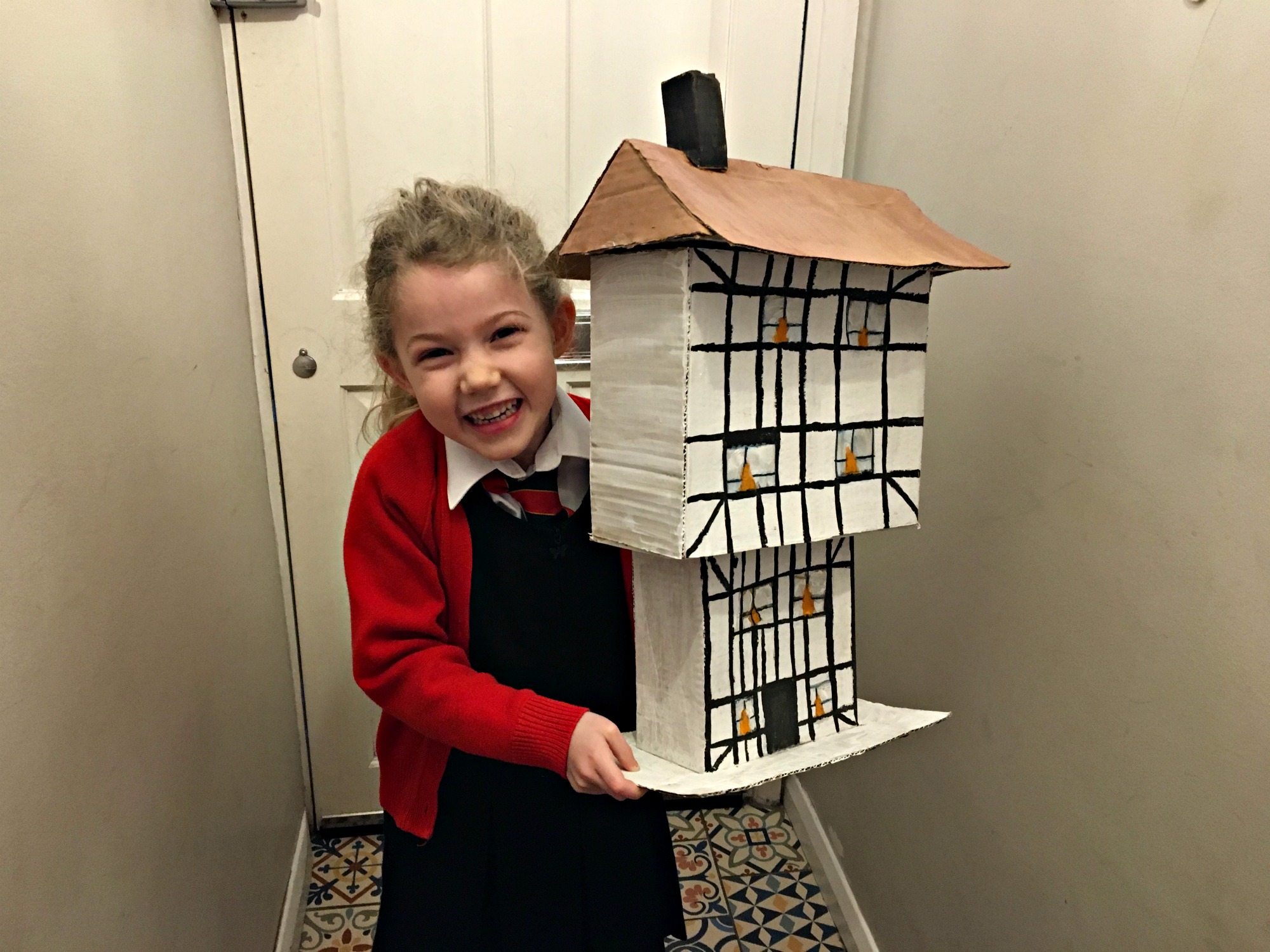
Retracing history in a Great Fire of London walk was a great day out and helped reinforce the significance of the event for my daughter. I’d recommend going to these key sights. If you can pick a brighter day, London will look even better from the top of Monument.
If you liked this article about the Great Fire of London walk and to follow it as a guide, you can download it – along with other city guides – as an app at GPSmyCity.
You may also enjoy reading
The London Eye with kids – is it worth a visit?
Journey through history at the Museum of London
Climbing to the top of St Paul’s Cathedral
Day out at the London Transport Museum
If you are looking to spend some time in the area around the Great Fire of London, these hotels are in the vicinity of the City of London.
Pin for later
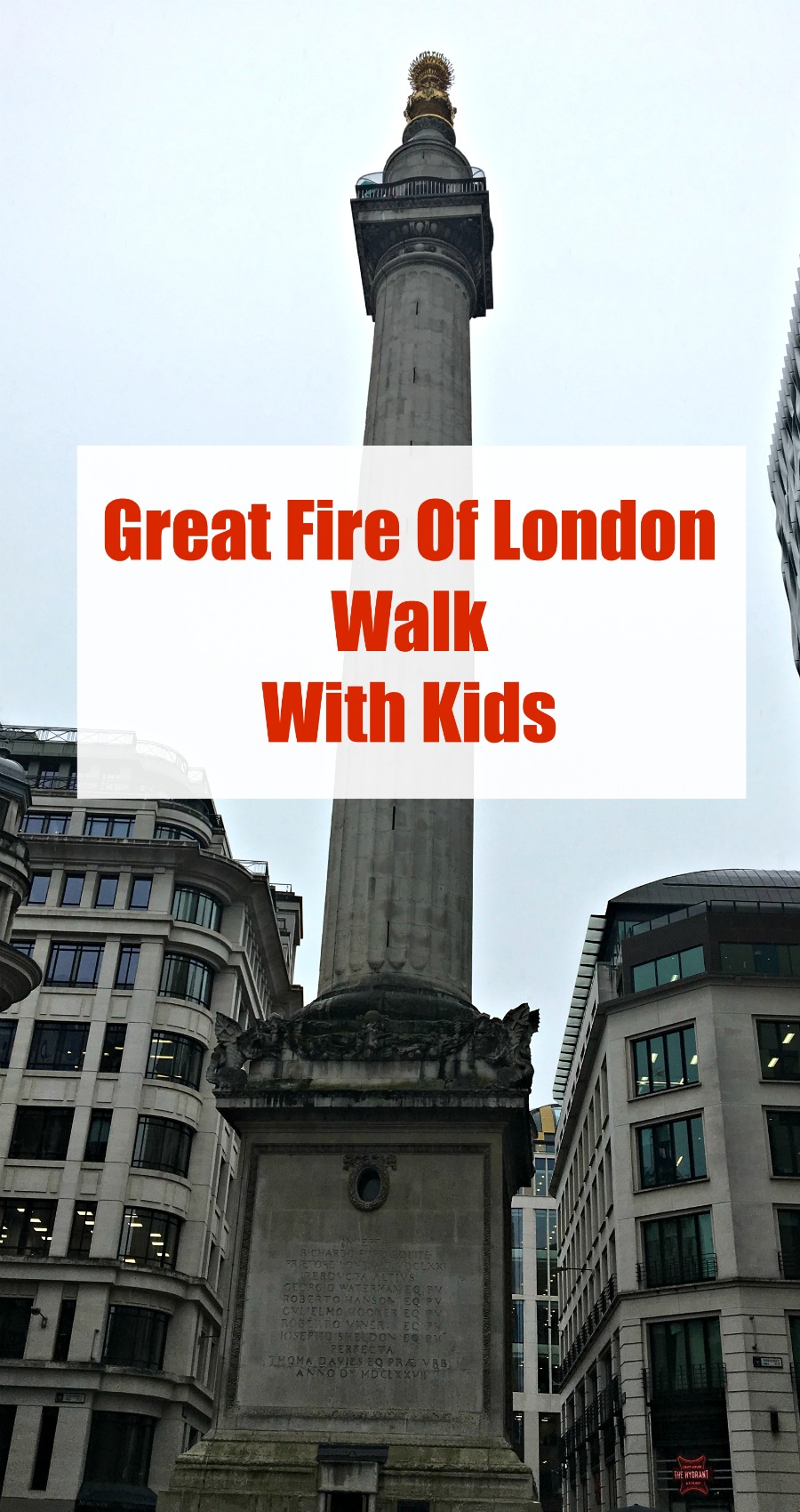

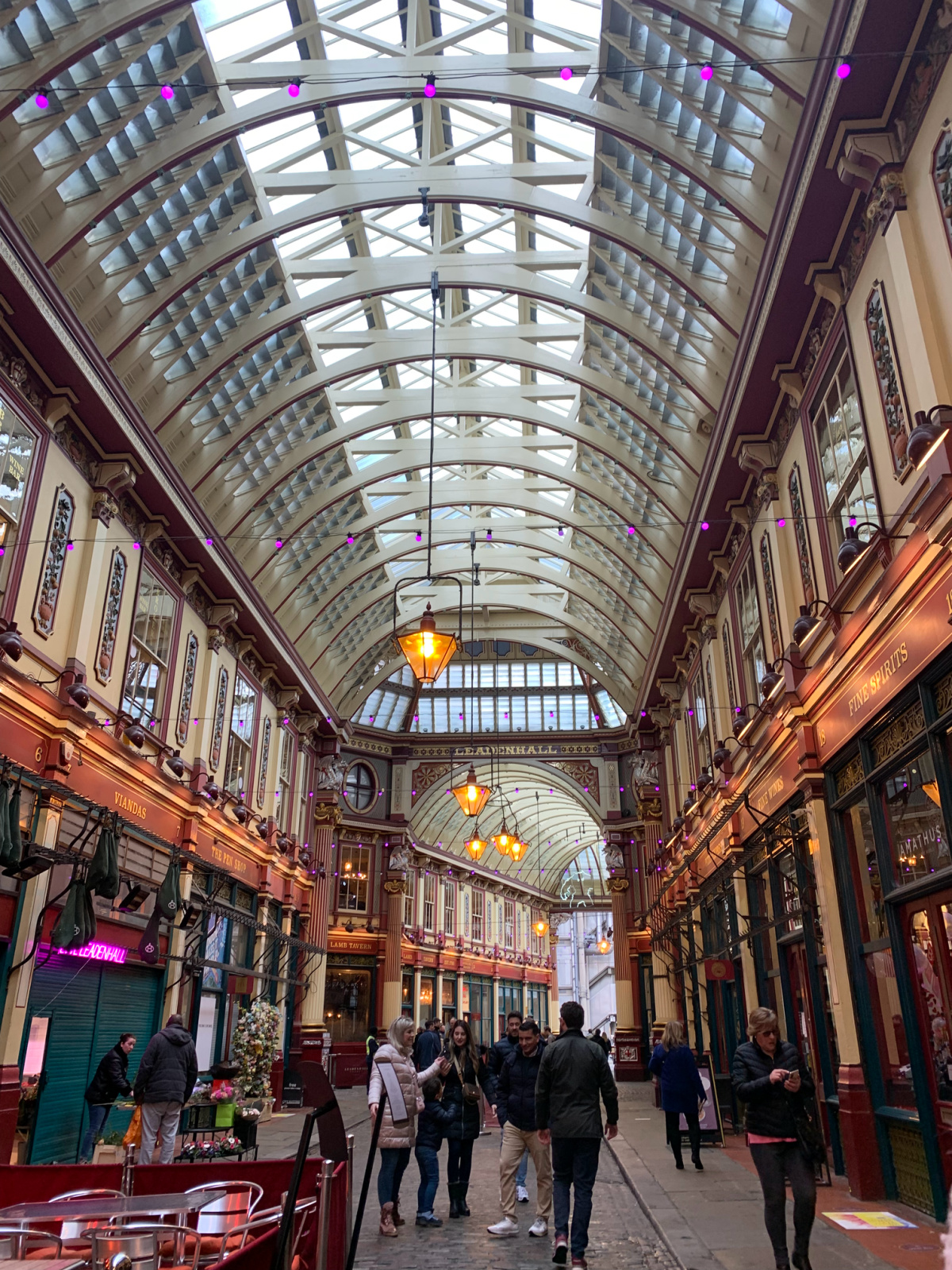
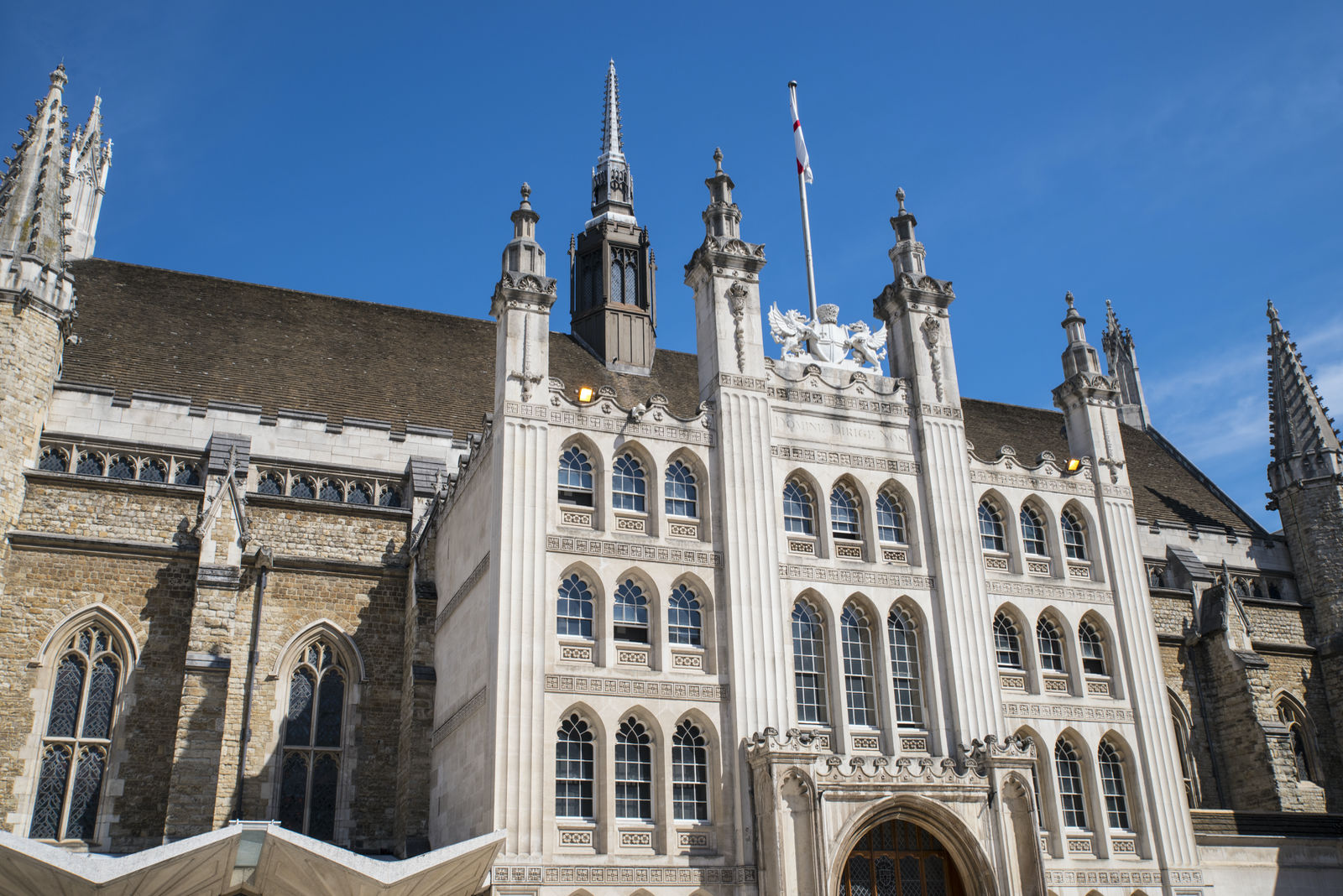
My daughter hasn’t long finished the topic of the Great Fire of London at school, so this would be perfect for her. We will be following this route on our next visit to London to chat about what she has learned
Zena’s Suitcase recently posted…The BEST Colorado Road Trip Itinerary – Stops, Stays & Eats
Fantastic! Such a great thing to do. Enjoy!